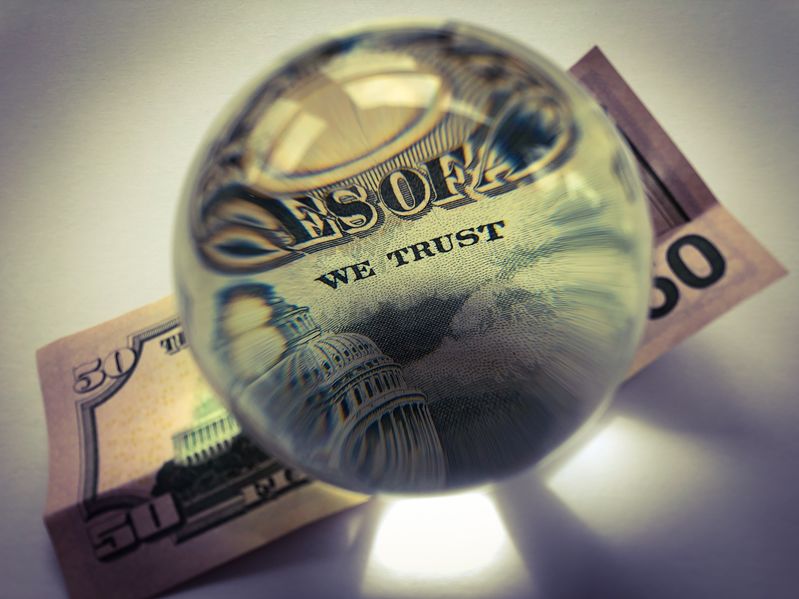One of President Biden’s campaign promises, now a top priority, is to change the current tax policy in order to pay for additional stimulus and control the blooming budget deficit. Today, there are several policy changes on the table. We researched the question of whether a higher tax rate will derail the economic recovery. Our conclusion: Historical changes in tax policy has had a statistically insignificant impact on economic growth and we don’t think that will change in this cycle.
READ ALSO: 2021 forecast: Light at the end of the tunnel
Potential changes
There are a number of potential tax policy changes that are being discussed in Washington – below are just a few under discussion:
1. A higher marginal tax bracket for high-wage earners – 39.6% for those making more than $400,000 a year. Currently the top bracket is 37%.
2. Removing the set-up basis for appreciated assets in estates.
3. Taxing capital gains at income tax rates for those making more than $1,000,000.
4. Increasing corporate tax rates from 21% to 28% and implementing a minimum tax for large corporations.
These changes could potentially increase federal revenue by $2 trillion over 15 years. However, we think there is a higher probability that only $1 trillion of increases will eventually be passed by Congress.

Why change the tax policy?
The COVID pandemic and massive stimulus have sent budget deficits and the nation’s debt skyrocketing. President Biden has offered tax increases to offset the high cost of numerous pandemic relief programs.
In 1980, the U.S. budget was in balance, in 2000 the U.S. had a surplus, today the U.S. has a $3.3 trillion budget deficit, and more than likely, anticipating a $2.3 trillion infrastructure bill, it will get larger by the end of the year. The budget deficit as a percentage of GDP has grown for five straight years. High levels of debt tend to slow long-term economic growth.
President Biden also appealed to a sense of “tax fairness” and income inequality. Due to the K-shaped recovery, wealthier individuals fared well through the pandemic and low- to mid-income families struggled. The wealthiest 1% of U.S. households added more than $4 trillion of wealth last year as risk-based assets increased in value. The bottom 50% of U.S. households saw their net worth increase by $470 billion, much of that coming from stimulus.
Will higher taxes derail the recovery?
Historical evidence suggests that raising taxes is not a catalyst hindering growth. According to numerous think tanks such as the Economic Policy Institute, changes in tax rates, whether they’re an increase or decrease, do not materially change demand in the short-run or supply in the long-run. There is substantial empirical evidence to support this conclusion.
The economic textbooks cite a common economic metric called the fiscal multiplier. The multiplier measures the efficacy of changing fiscal policy has on economic activity – basically, what is the bang for each buck the government spends. If taxes go up or down, what happens to GDP? An analysis from Congressional Budget Office suggests that tax rate changes for both high wage earners and corporations are unfortunately ineffective in stimulating economic growth.
The economy experienced a recession in 1990-91. Unemployment spiked from 5% to almost 8%. Then in 1993, while the economy was still recovering and unemployment was over 6%, President Clinton increased individual income taxes (the top rate from 31% to 39.6%), bumped up corporate tax rates and hiked the national gasoline tax. Terrible, right? Not so fast. In 1993, the economy expanded at a 2.7% rate. The economy grew even faster in 1994 with GDP growth at 4%. The second half of the 1990s were very good for most Americans. Unemployment fell to 4% by the end of the decade and the S&P 500 more than doubled in value from 1993 to the end of 1997.
2013 is another example of changing tax policy not impacting the economy or markets. In that year, President Obama increased the top marginal tax bracket to 39.6% for those earning more than $400,000. Interest rates were also a headwind. Sounding familiar? The 10-year Treasury rate increased from 1.76% to 3.03% by the end of the year. Again, we experienced higher tax rates and interest rates, two variables that many perceive as negative for economic activity and stock prices. Yet the economy continued to grow: GDP growth in 2013 was 1.8% and the S&P 500 posted a 32.4% total return. The next year, 2014, GDP increased 2.5% and the S&P 500 gained 13.7%. Higher taxes didn’t ruin the party.
Conclusion
U.S. income tax was introduced in 1913. Over the decades, radical changes in tax policy have had limited impact on long-term economic growth. From 1913 to 1950, the average federal tax revenue as a percentage of GDP was 10.7%. Average GDP growth per capita for that period was 2.0%. From 1951 to 2014, average federal tax revenue as a percentage of GDP was 17.4% and average GDP growth per capita was 1.9%. My guess is no one is interested in paying more taxes; However, throughout history, the bottom line is a change in tax policy, higher or lower, results in virtually no observable change in economic growth rates.
We don’t see why this potential change will be any different. The driver of economic growth and financial markets in 2021 will be the normalization of economic activity from the COVID pandemic as vaccinations increase and accommodative financial conditions, such as low interest rates, prevail.
We continue to believe that the economy will grow in the 5-6% range in 2021 and risk-based assets, such as the S&P 500, will produce returns in the 7-12% range.
KC Mathews is chief investment officer with UMB Bank.




